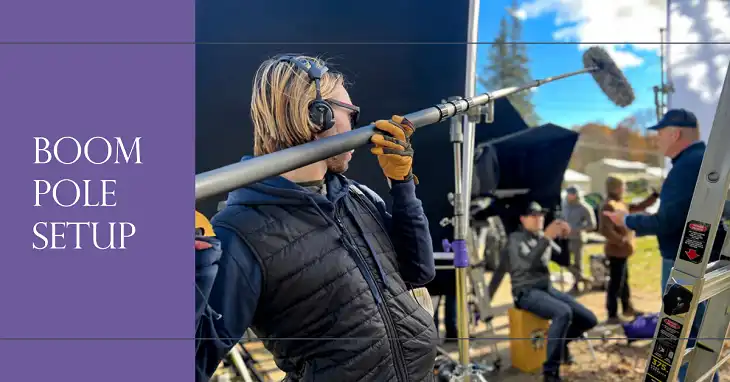How to Do Storytelling in Landscape Photography?
Have you ever looked at a landscape photo and it totally pulled you in? Maybe it made you feel super small next to giant mountains, or super peaceful by a calm lake. That’s the magic of storytelling in landscape photography! It’s not just about capturing a pretty view, it’s about capturing a feeling. In this guide, we’ll break down how to take landscape photos that go beyond just looking nice. I’ll cover how to find your own story, how to arrange your photo to lead people’s eyes around, and how to use light, weather, and even people to set the mood. So grab your camera (or bookmark this article for later!), and let’s get ready to turn your landscape photos into something amazing!

Before the Shot: Find Your Story
The first step in storytelling photography is, well, having a story to tell. What do you want your image to convey? Is it the feeling of solitude as you stand beneath a sky bursting with stars? The raw power of a storm crashing against the coastline? Or perhaps the delicate resilience of life clinging to a windswept cliffside?
Having a clear concept in mind will guide your entire process, from choosing a location to composing your shot. Think about the emotions you want to evoke in the viewer. Tranquility? Wonder? Awe? Fear? Let that be your compass as you scout for locations and decide on the technical aspects of your photograph.
Here are some additional tips for finding your story:
- Research your location: If you’re heading to a specific spot, delve into its history, culture, or ecological significance. Understanding the backstory of a place can add depth and meaning to your image.
- Look for details that tell a story: A lone, weathered tree on a hilltop can speak volumes about perseverance. A winding path disappearing into a forest can spark the viewer’s imagination. Keep your eyes peeled for these storytelling nuggets in the landscape.
Composition: Guiding the Eye
Once you’ve got your story locked and loaded, it’s time to think about how you’ll visually translate it into a photograph. Composition is all about guiding the viewer’s eye through your image, directing their attention to the elements that tell your story. Here are a few key techniques:
- Lead Lines: These are natural elements in the scene that draw the viewer’s eye into the image. Think winding rivers, meandering roads, or a line of telephone poles stretching towards the horizon. Use these lines to lead the eye towards your main subject and create a sense of depth.
- Foreground: Don’t forget the power of the foreground! Including a strong foreground element adds context, depth, and sets the stage for your story. It could be anything from some interesting rocks in the frame to vibrant wildflowers carpeting the ground.
- Rule of Thirds: This is a classic composition rule that suggests dividing your frame into a grid of nine squares. Position your main subject at one of the intersecting points for a more dynamic and visually pleasing composition.
Remember, composition isn’t about rigid rules; it’s about using your creativity to guide the viewer’s eye and tell your story in the most compelling way possible.
Elements that Set the Mood
Now that you’ve got a strong composition, let’s talk about the mood. Light, weather, and even human presence can all play a significant role in elevating your landscape photograph from a snapshot to a story.
- Light: Light is a storytelling powerhouse. Warm golden hour light creates a sense of peace and tranquility. Harsh midday sun can add drama and a sense of urgency. Soft, diffused light can evoke a feeling of mystery or serenity. Experiment with different lighting conditions to see how they affect the mood of your image.
- Weather: Don’t shy away from dramatic weather! Storm clouds, rolling fog, or a vibrant sunset can add a powerful emotional punch to your landscape. Imagine a lone figure silhouetted against a dramatic sky – that’s storytelling in action!
- Human Presence: Including people interacting with the landscape can add a narrative element and a sense of scale. It doesn’t have to be a full-on portrait; even a lone hiker in the distance or a set of footprints in the sand can spark the viewer’s imagination and help them connect with the scene on a deeper level.
Beyond the Single Shot: Consider a Series
Sometimes, a single frame isn’t enough to fully convey the depth and complexity of your story. Consider capturing a series of images that build upon each other, creating a visual journey through the landscape.
Imagine capturing the ever-changing moods of a coastal scene throughout the day, from the soft hues of dawn to the fiery glow of sunset. Or perhaps you could document a hiker’s trek through a stunning mountain range, showcasing the diverse landscapes they encounter along the way.
By presenting a collection of images, you create a rich tapestry that immerses the viewer in your narrative, allowing them to experience the full breadth of your story.
FAQs
Do I need expensive gear to tell a compelling story through my landscape photography?
Not at all! While high-end gear can certainly help, storytelling in landscape photography is more about your vision and creativity than the equipment you use. Even with a basic camera and a keen eye for composition, you can craft engaging narratives that capture the essence of a scene.
How can I ensure my story is understood by the viewer?
Start by having a clear concept in mind before you begin shooting. Then, use compositional elements like lead lines, foreground interest, and the rule of thirds to guide the viewer’s eye and evoke specific emotions. Finally, consider adding subtle human elements or capturing a series of images to provide context and depth to your narrative.
What if the location I’m shooting doesn’t have an obvious story?
Every location has a story waiting to be told – you just need to look a little closer. Research the area’s history, culture, or ecological significance to uncover potential narratives. Additionally, pay attention to the interplay of light, weather, and human elements, as these can add layers of intrigue and emotion to even the most seemingly ordinary landscapes.
Bottom Line
Remember, storytelling is a skill that takes practice, patience, and a keen eye for detail. As you continue to hone your craft, you’ll find that your images take on a new depth and resonance, transporting viewers to the very heart of the scenes you capture.
If you have any questions or insights to share, please don’t hesitate to leave a comment below. I’d love to hear your thoughts and experiences with storytelling in landscape photography.






